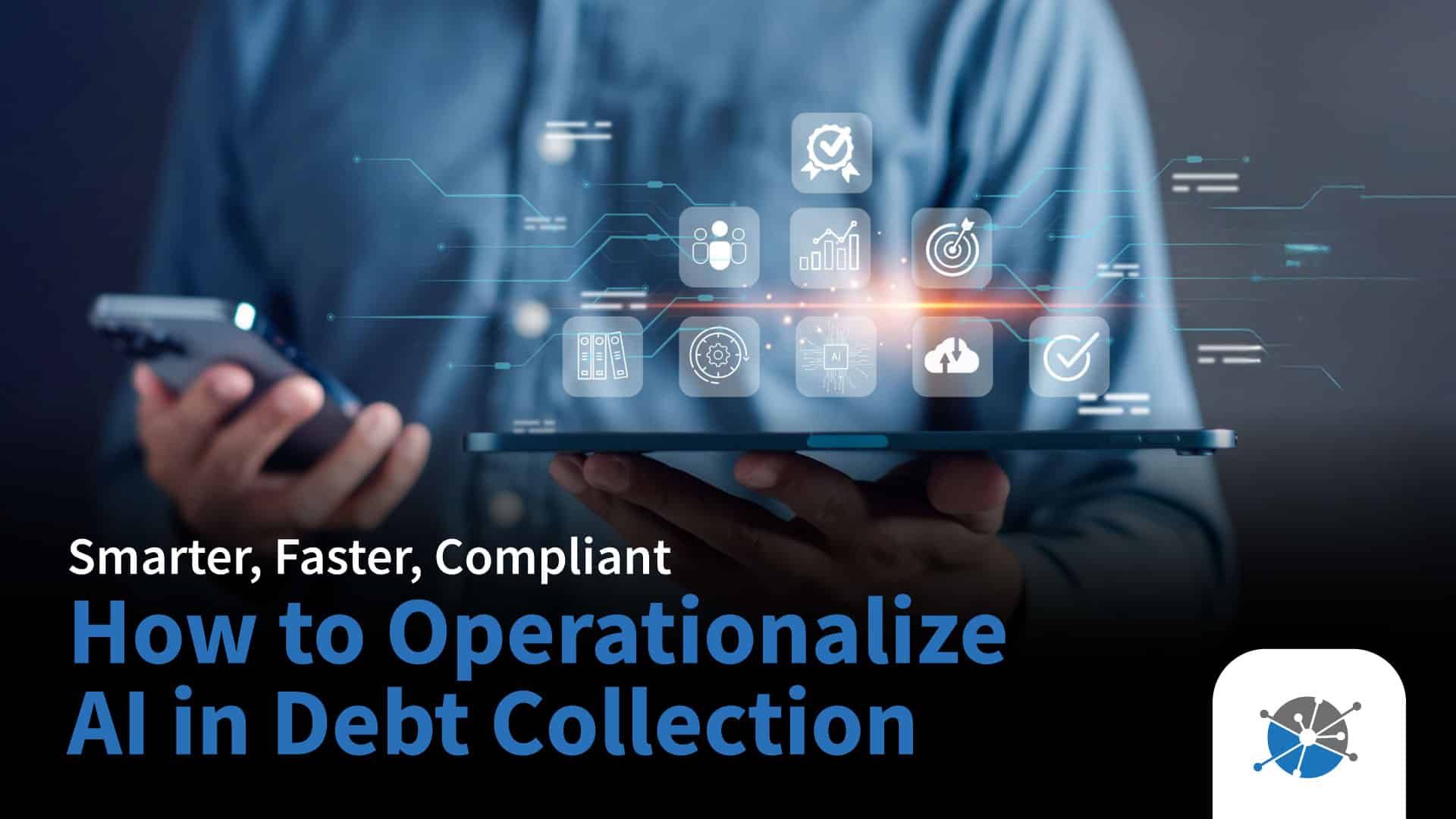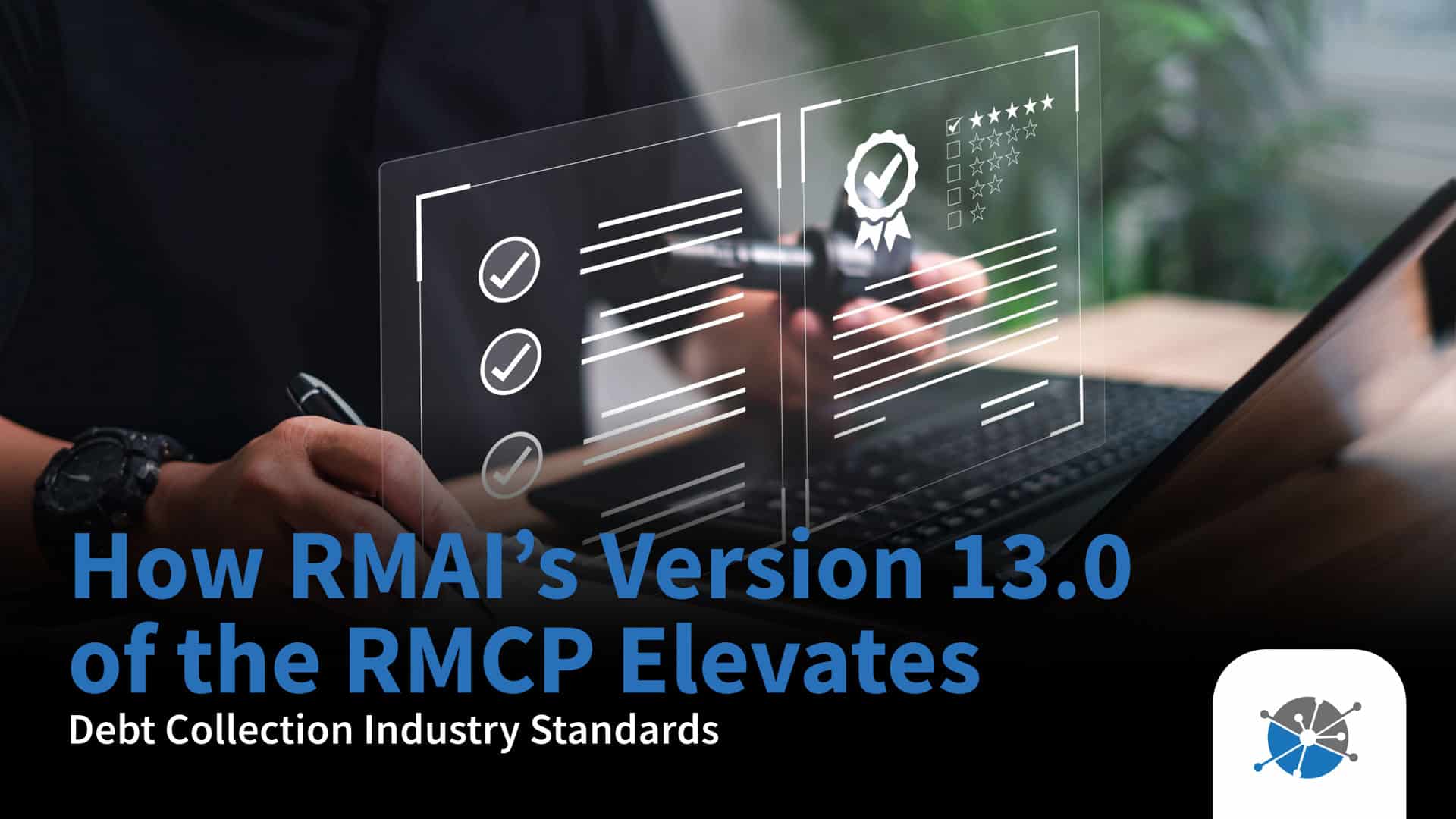
Smarter, Faster, Compliant | How to Operationalize AI in Debt Collection
Abstract
As artificial intelligence reshapes the debt collection landscape, operationalizing AI in a compliant, scalable, and effective way is becoming both a necessity and a competitive advantage. This article explores strategies for aligning AI deployment with business outcomes, improving vendor oversight, leveraging model cards for regulatory readiness, and ensuring fairness through bias audits and technical transparency.
Rethinking AI Implementation in Collections
The receivables industry has entered a transformative phase. Traditional models of outreach, engagement, and recovery are being tested against rapidly evolving digital consumer behaviors. As agencies and creditors seek better outcomes, artificial intelligence (AI) has emerged not just as a trend, but as an imperative. However, implementing AI effectively—without disrupting operations or inviting compliance risk—requires more than just technology.
AI’s promise in collections lies in its ability to automate workflows, improve segmentation, and boost recovery rates through intelligent predictions. Yet, too many organizations fall into the trap of implementing AI for its novelty rather than for a clearly defined purpose. This misstep leads to underutilization, poor integration, and heightened regulatory exposure.
Start With the Outcome, Not the Algorithm
The first step to operationalizing AI is to begin not with tools, but with outcomes. Organizations must ask themselves: What problem are we trying to solve? Whether it’s increasing right-party contacts, reducing operational costs, or improving customer experience, each AI deployment must tie directly to measurable objectives.
AI tools should not be deployed in isolation. From the outset, compliance, operations, IT, and legal must collaborate to define KPIs, validate data sources, and establish success criteria. A well-aligned, cross-functional strategy avoids silos and ensures AI supports broader business goals.
Small Wins, Big Buy-In
In complex environments like collections, large-scale transformations often trigger internal resistance. A more sustainable approach begins with controlled experimentation. Select one portfolio or business unit, implement an AI use case, and rigorously measure its impact.
These “small wins” serve as proof points. They create internal champions, inform broader rollout strategies, and demonstrate AI’s tangible value to risk-averse stakeholders. This incremental model accelerates adoption while keeping compliance and audit readiness front and center.
Model Cards: Blueprint for Responsible AI
One of the most critical components of any AI deployment today is documented transparency. Model cards—structured summaries that detail how AI systems were built, trained, tested, and governed—are quickly becoming standard in regulated industries.
Creditors, regulators, and clients increasingly ask: What models are you using? How are you auditing them? Who are your fourth-party providers? Model cards provide a clear, consistent answer. They allow agencies to demonstrate their due diligence and risk controls while also facilitating internal reviews and vendor oversight.
What Makes a Strong Model Card?
A comprehensive model card should include:
- Model purpose and intended use case
- Data sources, lineage, and preprocessing methods
- Performance metrics across relevant subgroups (e.g., age, geography)
- Fairness metrics and results of bias audits
- Governance ownership (e.g., responsible team and update cycle)
At EXL, model cards are a non-negotiable. Every model we develop comes with a comprehensive card that outlines not only performance benchmarks but also fairness assessments and model limitations. This strengthens stakeholder trust while reducing legal exposure.
Bias Audits and Fairness Frameworks
In debt collection, bias is not theoretical—it can directly impact consumers’ access to repayment options, digital engagement, or even credit reporting outcomes. Therefore, each AI implementation must include regular fairness audits.
Bias audits should test outputs across protected classes such as age, gender, ethnicity, and income brackets. Disparate impact, representation bias, and label leakage are just a few of the risks that must be assessed and mitigated. Establishing automated pipelines to flag anomalies ensures models remain fair as data and consumer behaviors evolve.
Vendor Oversight in the AI Age
As vendors and service providers build more AI-powered capabilities into their offerings, organizations must evolve their third-party risk management frameworks accordingly. Oversight must extend beyond basic SLA and pricing discussions to include:
- Technical transparency into how models function
- Access to documentation like model cards and bias impact assessments
- Explanation of model retraining frequency and governance policies
- Continuous monitoring plans for drift, misuse, or bias reintroduction
Fourth-Party Risk Considerations
Fourth-party risks—vendors of your vendors—also require visibility. It’s not enough to know who built the model. You must know how it was built, who touched the data, and what controls exist in each layer of the stack. Request a map of upstream and downstream dependencies during onboarding.
Integration Without Disruption
AI doesn’t need to be overwhelming. The most successful deployments are not the most complex, but the most focused. At the end of the day, launching an AI-powered email campaign might be as straightforward as uploading a dialer file with an email column.
Integration strategies should emphasize compatibility with existing systems (e.g., CRM, dialers, payment platforms) using low-code interfaces or middleware APIs. Successful projects prioritize minimal disruption, scalability, and ease of validation.
We’ve seen agencies get up and running in less than three months—often without needing to rip and replace legacy systems. The key is clarity: know what you want to achieve, test it rigorously, and document everything.
The Road Ahead
The next evolution of AI in collections will not be about more automation or even better models—it will be about trust and validation. As scrutiny from regulators intensifies and clients demand greater accountability, operational excellence in AI will hinge on proactive documentation, ethical safeguards, and transparent oversight.
Those who succeed will be those who can combine innovation with governance, agility with accountability.
About the Author
Mike Walsh is Vice President of Sales Engineering and Client Success at EXL, where he helps receivables clients design and deploy scalable, compliant AI solutions. He specializes in operational strategy, responsible AI practices, and cross-functional implementation in regulated industries.






